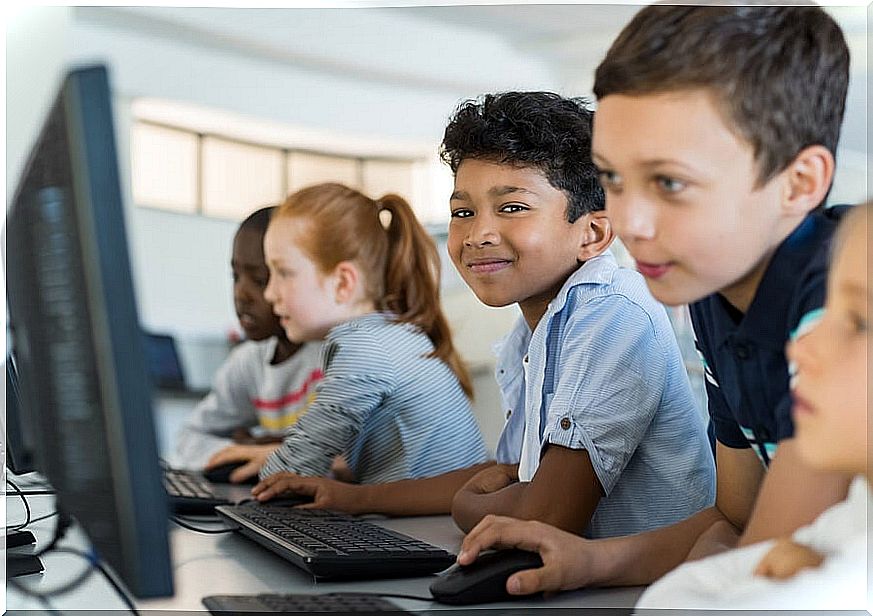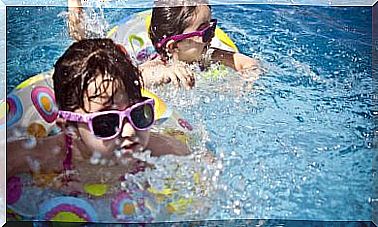Brain Bases Of Learning

Any learning is a continuous process in which we are assimilating data and certain information; later, we ‘file’ it in our mental system. Learn everything you need to know about the brain foundations of learning in the following article.
This entire learning process will begin with the information entering through any of the senses. Later, it will be stored in our brain, for possible later use. What can the experts tell us about this process?
Approach to neuroscience
We understand neuroscience as a set of disciplines that analyze the nervous system. It is about evaluating the mechanisms that make possible the different brain behaviors, as well as the management of the individual’s reactions.
Relationship between learning and neuroscience
Learning is the essence of human existence. The human being began his steps on Earth learning to cultivate and till the land, to raise animals and everything else for his own survival. In addition, what is more important: he was able to transmit this knowledge to his peers.
Despite the many advances that have been made, the human brain remains one of the great mysteries. How are we acquiring the different knowledge? How does our memory work? There are many questions, and the answers are obtained drop by drop.
In educational neuroscience, one of the main postulates is that, both in real life and in the classroom, the basis for learning is in experimentation. That is, knowledge is not achieved by memorizing or repeating, but with experiences and emotions.
In this sense, intelligence is understood as a multidimensional concept. In a similar learning environment, each student can receive the informational codes and process them in their mind differently.

Emotions and other cognitive processes
Linked to this process of learning and storing information are other processes, such as attention, memory, communication skills and motivation to learn. Above all this set will influence the emotions that people who are learning are feeling.
We will analyze below each of these processes with influence on the brain bases of learning:
Communication
The first element to start the reception of information is that of communication. To communicate, we use different areas of our brain, as well as complicated mechanisms of operation.
In communication we not only consider oral language in any of its forms, but also expression through gestures; this is what we can call non-verbal language.
Attention
Attention gets children to orient themselves towards a specific aspect and to ignore (even for a moment) the rich world of stimuli that invades them. Only in this way will they be able to capture the message that a new learning transmits to them.
There are several brain nuclei that influence attention. It’s not just about receiving the data, but about retaining it for analysis at a quick first glance. Once its importance is considered, other nuclei of the brain will filter what is not considered necessary and that will be rejected.
Motivation
Through motivation, we encourage children to take action in their learning process. With it, we invite you to act, even in a mental way. By motivating, we get children to overcome difficulties such as fatigue and to be able to concentrate.
Memory
With memory, children manage to store the information they have received in their learning to be able to use it in the future, immediate or not. Memory has different degrees and is a fundamental part of the brain’s basis for learning.

Neurosciences are all the rage
Analysis of brain function is always very much in vogue. It is about giving convincing explanations to emotions, life in society, culture and everything related to human life. Logically, everything is analyzed from a neural point of view.
One of the main goals of pedagogy and neuroscience today is collaboration to optimize the learning of school-age children.
Among the current trends, there is what is called ‘pedagogy of fun’; that is, the use of neurodidactics to arouse curiosity in learners. With this resource, from curiosity to motivation, and from there to learning.
Thus, through a playful environment and with didactic games, creativity in children is enhanced, while avoiding the feeling of exhaustion and also the fear of school failure.










